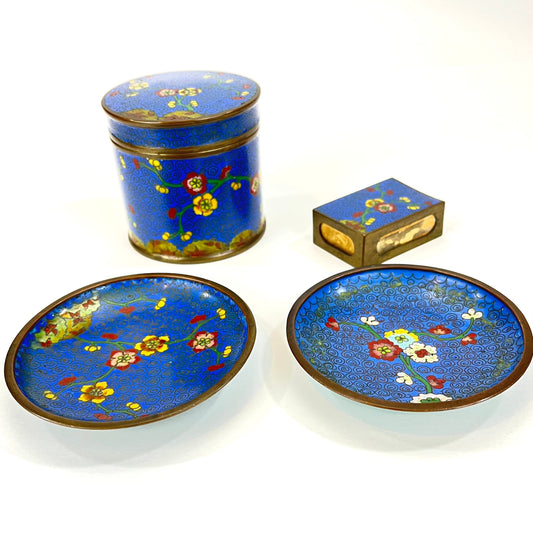Collection: Cloisonné
Japanese and Chinese cloisonné are traditional enamelwork techniques characterized by the intricate sculpting of metal wires (cloisons) onto a metal surface to create small compartments or cells. These cells are then filled with colored enamel, typically a vitreous glass powder. After firing, the enamel melts, fusing with the metal surface and forming a smooth, vibrant, and durable decorative finish. Both art forms demonstrate a high degree of craftsmanship and artistry, with historical roots dating back centuries. Chinese cloisonné has a longer history, dating to the Yuan Dynasty (1271-1368), while Japanese cloisonné (Shippo) saw significant development during the Meiji era (1868-1912) when it adapted and innovated upon Chinese techniques. In these ornate masterpieces, one finds the synthesis of form and color, a testament to the ingenuity and artistic finesse of Asian artisans throughout history.






